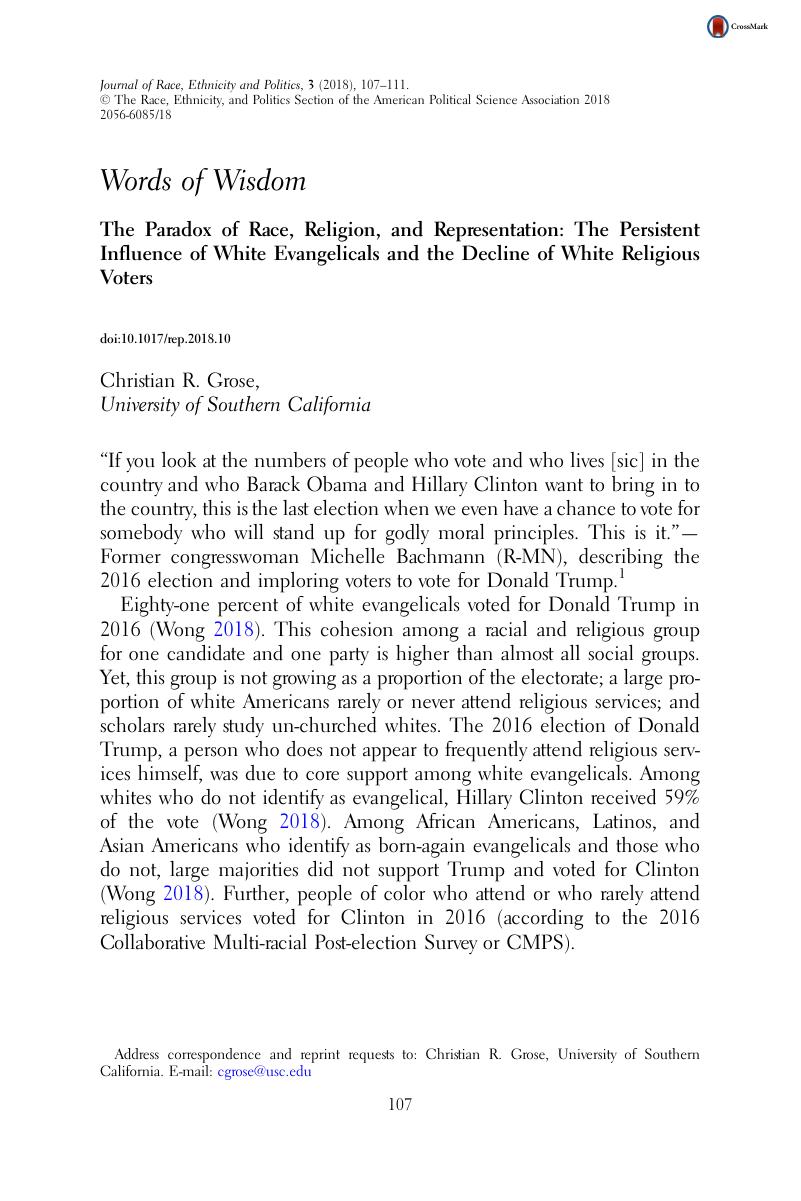Crossref Citations
This article has been cited by the following publications. This list is generated based on data provided by Crossref.
Holman, Mirya
Podrazik, Erica
and
Silber Mohamed, Heather
2020.
Choosing Choice: How Gender and Religiosity Shape Abortion Attitudes among Latinos.
The Journal of Race, Ethnicity, and Politics,
Vol. 5,
Issue. 2,
p.
384.
García Bedolla, Lisa
2021.
On the Ballot in 2020: Will the United States (finally) embrace civil rights?.
The Journal of Race, Ethnicity, and Politics,
Vol. 6,
Issue. 1,
p.
71.
Centeno, Raquel
Grose, Christian R.
Hernandez, Nancy
and
Wolf, Kayla
2021.
The Demobilizing Effect of Primary Electoral Institutions on Voters of Color.
SSRN Electronic Journal ,
Morales, Mauricio
2024.
Religious Voting in a Secularised Country: Evidence From Chile’s 2022 Constitutional Referendum.
Secularism and Nonreligion,
Vol. 13,
Issue. ,



